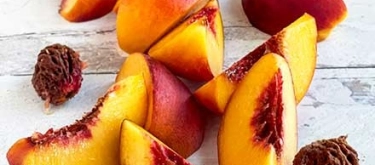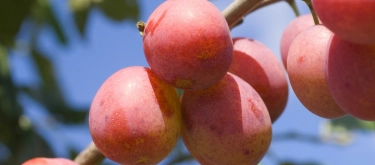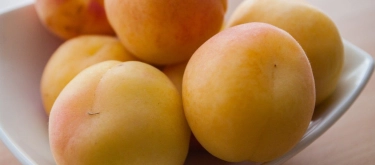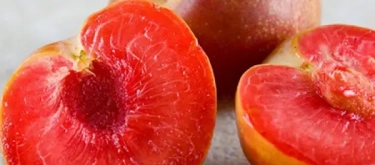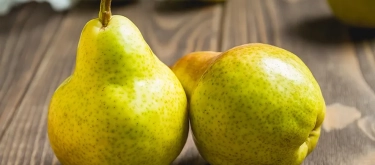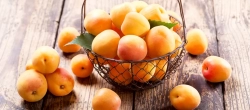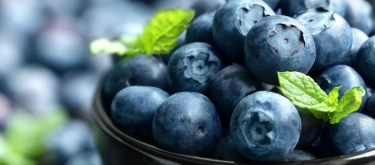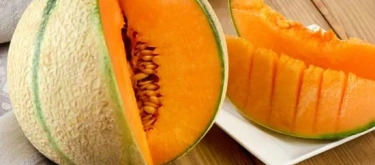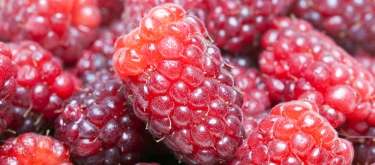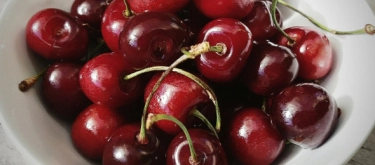Peach: Taste Profile, Aroma, Benefits and Health Risks
The peach (Prunus persica) is a widely beloved stone fruit originating from Northwest China, known globally for its lush sweetness, aromatic charm, and delicate texture. Cultivated extensively across temperate climates, particularly Europe, North America, and East Asia, peaches are esteemed fresh and in numerous culinary applications. Renowned for their vibrant taste, juicy flesh, and nutritional value, peaches have long symbolized abundance, longevity, and culinary sophistication.
Peaches are suitable for vegetarians, vegans, and gluten-free diets. However, peaches may trigger allergic reactions in individuals sensitive to stone fruits or birch pollen (Oral Allergy Syndrome). Peaches also contain natural sugars, and their fuzzy skin may cause mild irritation in sensitive individuals.
What does Peach taste like?
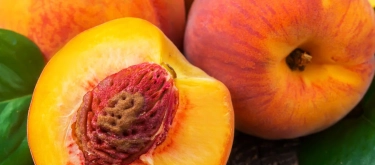
Complete Sensory Description
Taste
Peaches present a delightful balance of sweetness, acidity, and subtle complexity. The primary flavor profile is rich, luscious sweetness, often described as honeyed or floral, combined harmoniously with gentle, tangy acidity. Ripe peaches exhibit pronounced fruity notes reminiscent of apricot, nectarine, and plum, often accompanied by subtle floral (rose-like) or almond-like nuances derived from the fruit’s pit. Flavor intensity ranges from delicately sweet in white peaches to boldly aromatic and juicy in yellow peaches.
Aroma
Fresh peaches emit a rich, alluring fragrance combining fruity, floral, and sweet aromatic notes. Dominant aroma compounds, including lactones and esters, provide characteristic peach scents, often described as sweet, creamy, fruity, and slightly floral. Ripening enhances aromatic intensity significantly, resulting in a fragrant, inviting aroma that permeates the air, signaling peak ripeness and culinary allure.
Texture
Peach flesh texture varies between soft, juicy, and meltingly tender (freestone peaches), to slightly firmer, denser textures (clingstone varieties). Juicy and tender, the ripe peach flesh bursts with succulent sweetness upon biting. Peach skin is thin and velvety (fuzzy), offering textural contrast—some find its fuzziness appealingly distinctive, while others prefer peeled fruit.
Appearance
Peaches showcase visually appealing colors ranging from creamy-white or pale yellow to vibrant orange-red blushes, depending on variety and ripeness. Their velvety, fuzzy skin and rounded shape enhance visual attractiveness, while interior flesh typically exhibits bright yellow, golden, or white hues, contrasting beautifully with the reddish blush near the pit.
In-depth Flavor Analysis
The alluring taste of peaches results from an intricate interplay of sugars, acids, and aromatic compounds. Predominantly fructose and sucrose deliver sweet, honeyed sensations that intensify significantly upon ripening. The acidity, primarily due to malic acid (with smaller amounts of citric acid), balances sweetness, providing freshness and slight tanginess that invigorates the palate.
The signature aroma and flavor of peaches derive chiefly from lactones—particularly gamma-decalactone—responsible for peaches' creamy, fruity, and slightly coconut-like nuances. Additional aromatic compounds include esters (ethyl acetate and hexyl acetate) contributing fruity, apple-like, and fresh nuances, while aldehydes (such as benzaldehyde) add subtle almond-like and floral undertones, especially near the pit.
Flavor variability is significant among varieties: white peaches contain lower acidity and subtle floral sweetness, while yellow peaches offer robust acidity and pronounced fruity sweetness. Climatic factors influence flavor distinctly—cooler climates produce peaches with higher acidity and vibrant aromatic complexity, whereas warmer regions yield sweeter, milder-tasting fruit.
Varieties and Culinary Applications
Yellow Peach
- Bold sweetness, juicy texture, and higher acidity. Excellent fresh, grilled, baked into desserts, preserves, jams, or chutneys.
White Peach
- Delicately sweet, less acidic, subtle floral aroma. Ideal fresh or lightly cooked in desserts, salads, or paired elegantly with cheeses.
Doughnut (Flat) Peach
- Sweet, mild flavor, with soft, juicy texture; appealing fresh snack or gourmet salad ingredient.
Nectarine (Smooth-Skinned Peach Variant)
- Peach relative without fuzzy skin; similar flavor profile, excellent fresh or cooked in desserts, grilling, or salads.
Culinary Versatility
Peaches excel in:
- Fresh consumption: Enjoyed as snacks, fruit salads, or accompaniments to cheese platters.
- Desserts: Perfect for cobblers, pies, pastries, sorbets, ice creams, and puddings.
- Grilled or Roasted: Enhanced flavor when grilled or roasted, served with savory dishes or desserts.
- Sauces and preserves: Peach chutneys, jams, sauces, compotes, and reductions.
- Beverages: Peach smoothies, cocktails (Bellini), juices, and teas.
- Salads and Savory Pairings: Combine well with salads, cheeses, cured meats, poultry, and seafood.
Selection and Storage
Selecting Quality Peaches
- Choose peaches yielding slightly to gentle pressure, fragrant, heavy for size, with smooth, vibrant-colored skin.
- Avoid peaches with bruises, mold, wrinkles, or overly firm textures (indicating under-ripeness).
Storage Recommendations
- Ripen peaches at room temperature, then refrigerate ripe fruit (4–8°C / 39–46°F) to preserve freshness up to 5–7 days.
- Handle gently to prevent bruising and deterioration.
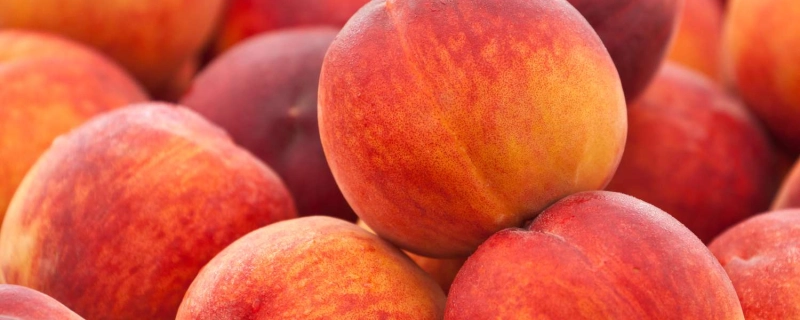
Nutritional Insights
-
Vitamin C & Antioxidants:
Excellent vitamin C source, providing antioxidant support, boosting immune health, and promoting collagen production. -
Dietary Fiber:
Contains soluble and insoluble fiber, aiding digestion, improving gut health, and promoting fullness. -
Potassium and Minerals:
Moderate potassium content, beneficial for cardiovascular health, hydration, and maintaining electrolyte balance. -
Low-Calorie, Nutrient-Rich Fruit:
Low in calories yet nutrient-dense, ideal for balanced diets, offering natural sweetness without excessive caloric intake.
Expert Insights & Culinary Tips
-
Flavor Pairings:
Peaches pair excellently with almonds, walnuts, cinnamon, nutmeg, ginger, vanilla, honey, yogurt, cream, cheeses (ricotta, mascarpone, goat cheese), and cured meats like prosciutto. -
Cooking Recommendations:
Grilling, roasting, or baking peaches intensifies their sweetness and caramelizes sugars, enhancing flavor depth and culinary appeal. -
Preventing Browning:
Sprinkling freshly cut peaches with lemon juice helps maintain vibrant color and freshness when used in salads or fruit platters.
Interesting and Curious Facts
- Peaches originated in China and symbolize longevity, prosperity, and immortality in traditional East Asian cultures.
- Georgia (USA) is famously known as the "Peach State," though California actually produces significantly more peaches annually.
- Peaches featured historically in artworks, mythology, and literature worldwide, symbolizing beauty, sensuality, and abundance.
Harm and Dietary Considerations
-
Oral Allergy Syndrome:
Individuals allergic to pollen, particularly birch pollen, may experience mild allergic reactions after consuming raw peaches. -
Gastrointestinal Sensitivity:
Due to high natural sugar and fiber content, excessive consumption may cause mild digestive discomfort in sensitive individuals.
Religious Dietary Considerations
Peaches are universally acceptable in all major religious dietary traditions:
- Islam: Permissible (Halal).
- Judaism: Permissible (Kosher, Parve).
- Hinduism & Buddhism: Widely permissible, commonly used in religious rituals, ceremonies, and offerings.
- No known restrictions in Christianity or other global religious traditions.
Final Thoughts & Sensory Journey
Peaches captivate with lush sweetness, inviting aromas, and succulent texture. Whether fresh, grilled, or baked into desserts, peaches provide vibrant, sophisticated culinary experiences, treasured globally for their refined flavor and versatile culinary appeal.
Resources
- McGee, H. (2004). On Food and Cooking: The Science and Lore of the Kitchen. Scribner.
- USDA FoodData Central (2023). Peach Nutritional Composition, Selection, and Culinary Uses.
- Food and Agriculture Organization (FAO). (2021). Stone Fruits: Cultivation, Culinary Insights, and Nutritional Value.
